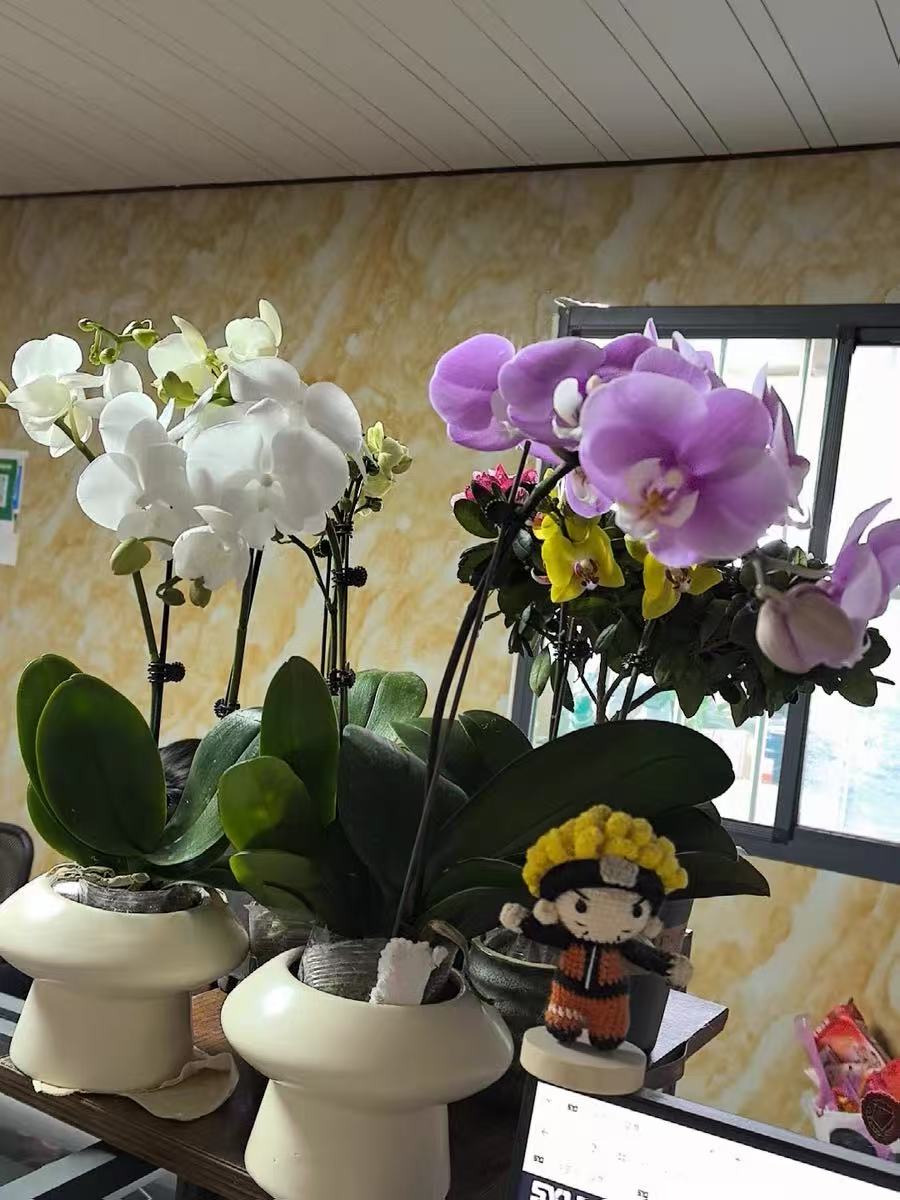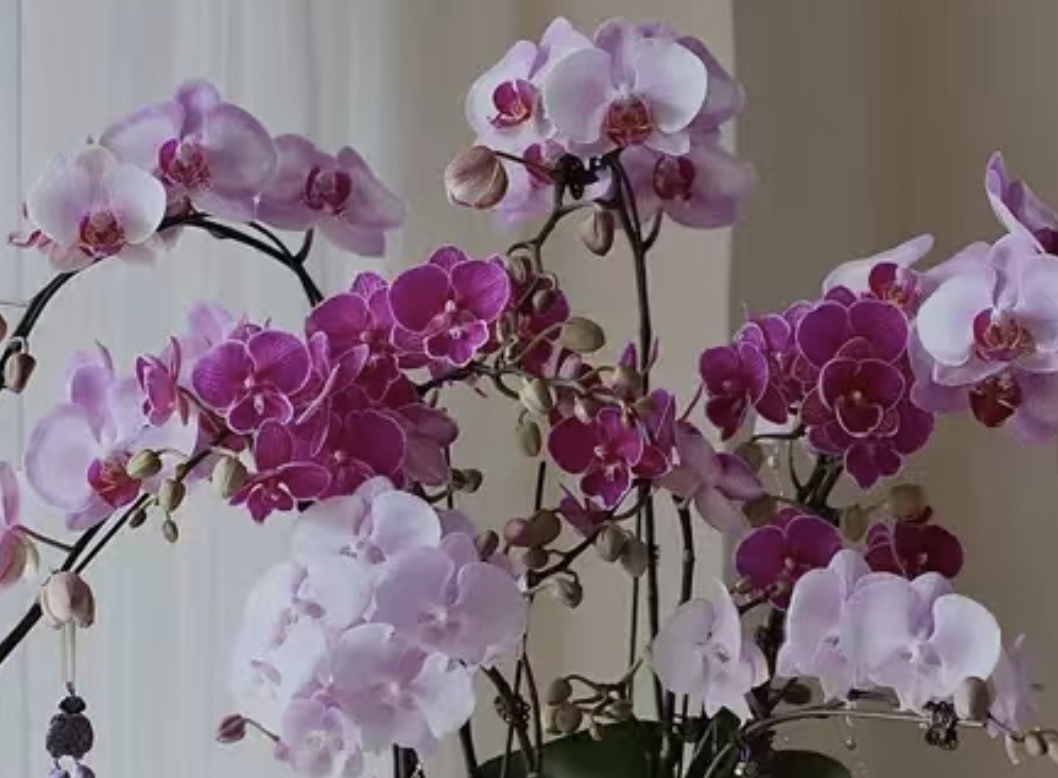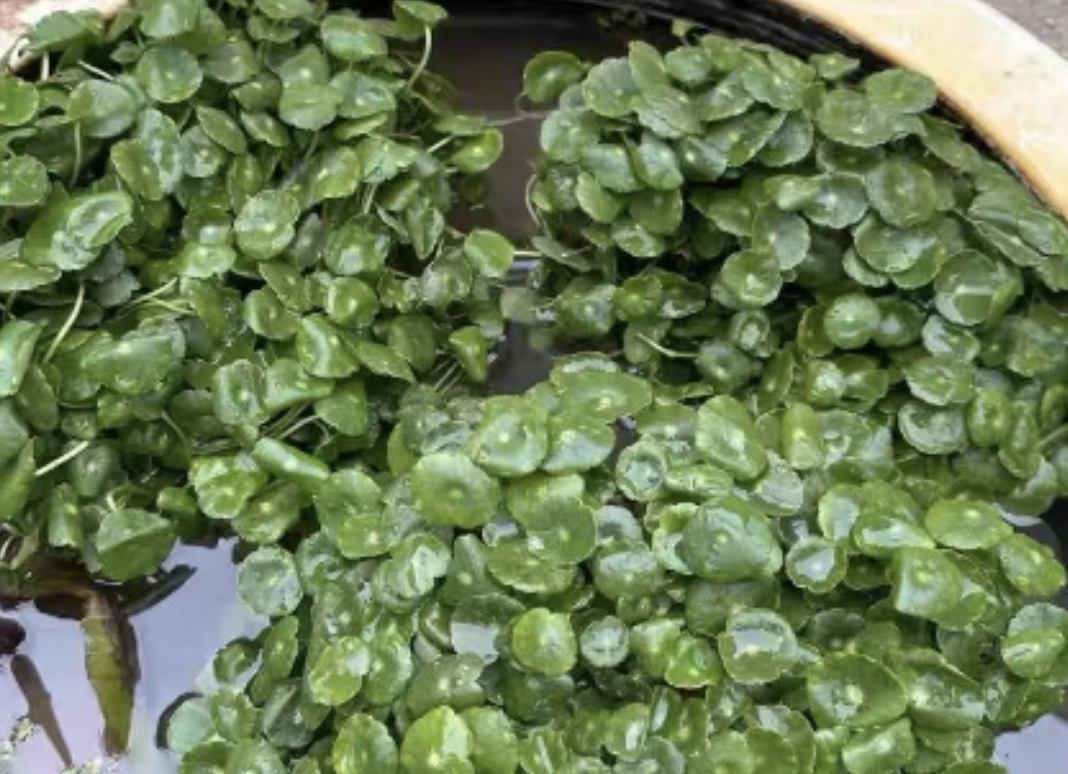As a beautiful ornamental flower, the management of temperature and fertilizers during the flower - forcing process of Phalaenopsis orchids is of crucial importance. The following will introduce in detail the suitable temperature for flower - forcing of Phalaenopsis orchids and the selection of fertilizers, helping flower enthusiasts to successfully force flowers and make the Phalaenopsis orchids at home bloom charming flowers.
Suitable temperature for flower - forcing of Phalaenopsis orchids:
During the flower - forcing of Phalaenopsis orchids, the control of the temperature difference between day and night is very critical. The daytime temperature should be maintained between 26°C and 28°C, while the nighttime temperature needs to be controlled between 20°C and 23°C. To more effectively promote flower - bud differentiation, it is recommended to keep the temperature difference between day and night within a certain range within one month before flower - forcing. For example, the daytime temperature can be controlled at 30°C, and the nighttime temperature can be reduced to 24°C; or 24°C during the day and 18°C at night. Maintaining such a temperature difference for at least one month can effectively increase the success rate of flower - forcing.
Temperature adjustment at different stages:
Early stage of flower - forcing: The daytime temperature is maintained at 16°C - 25°C, and the nighttime temperature is 16°C - 21°C.
Peduncle elongation stage: When the peduncle elongates to a certain length (more than 15 cm for large - flowered varieties, and more than 10 cm for small - flowered and multi - peduncle branched varieties), the daytime temperature needs to be increased to 25°C - 28°C, and the nighttime temperature is maintained at 18°C - 28°C.
Bud - showing stage: The temperature should be controlled at 18°C - 25°C, consistent with that of the peduncle stage.
Fertilizer selection for flower - forcing of Phalaenopsis orchids:
Pre - flower - forcing preparation: One month before flower - forcing, irrigate the roots twice with a 9 - 45 - 15 quick - acting fertilizer solution, and then change to a 10 - 30 - 20 fertilizer solution. The EC value of the fertilizer solution needs to be controlled between 1.0 mS/cm and 1.5 mS/cm. Fertilize once every 3 to 5 days, and pour clear water once after two fertilizations.
Fertilizers during flower - forcing period:
Full - element fertilizer solution: During the flower - forcing period, continue to irrigate the roots with a 10 - 30 - 20 full - element fertilizer solution. The EC value of the fertilizer solution is also controlled between 1.0 mS/cm and 1.5 mS/cm. Apply once every 3 to 5 days, and pour clear water once after applying the fertilizer solution three times.
High - phosphorus fertilizer: To promote flower - bud differentiation, you can choose to use high - phosphorus fertilizers such as Flower More No. 2. These fertilizers contain a high proportion of phosphorus and potassium elements, which can effectively force flowers. After the peduncle grows to a certain length, it can be used alternately with potassium dihydrogen phosphate until the flowers bloom.
Foliar fertilizer: During the vigorous growth period such as autumn, foliar fertilizer can be sprayed on Phalaenopsis orchids to enhance the photosynthesis of the leaves and promote the growth of the plants.
Precautions for fertilization:
Apply thin fertilizers frequently: When fertilizing, follow the principle of "applying thin fertilizers frequently" to avoid root - burning caused by excessive fertilizer concentration.
Avoid high - temperature direct sunlight: When fertilizing, avoid high - temperature periods and direct sunlight to prevent the fertilizer from evaporating too quickly or burning the leaves.
Rinse regularly: Regularly rinse the leaves and roots with clear water to prevent salinization caused by fertilizer residues.
The flower - forcing process of Phalaenopsis orchids requires meticulous management of temperature and fertilizers. By reasonably controlling the temperature difference between day and night, choosing the right fertilizers and following the correct fertilization methods, the Phalaenopsis orchids at home can bloom beautiful and charming flowers.
What is the appropriate temperature for flower - forcing of Phalaenopsis orchids?

Share with
Tagged in :




Leave a Reply